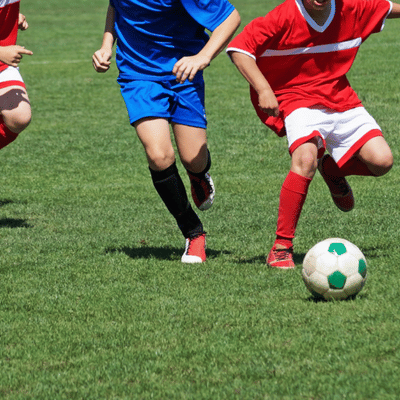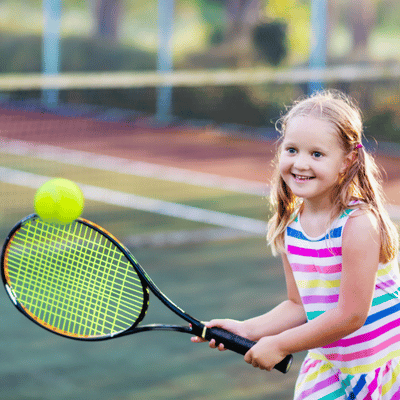Youth sports have never been more popular. Kids train harder and compete more aggressively than previous generations. This spike in activity has resulted in a concerning trend: injury rates are rising. Every year, more than 3.5 million children under the age of 14 need treatment for sports injuries. Sports now rank as the second leading cause of emergency room visits among young people.
The problem isn’t just accidents anymore. Many injuries develop slowly from repetitive stress and year-round training. The good news? Most youth sports injuries can be prevented with smart training choices and proper care.
What Causes Youth Sports Injuries

Understanding why injuries happen is the first step to stopping them. Two main types affect young athletes.
Acute injuries strike suddenly. A collision causes a concussion. A bad fall leads to ankle sprains or broken bones. These events happen in an instant and often require immediate care.
Overuse injuries tell a different story. They build over weeks and months from repeated motions without enough rest. A pitcher throws thousands of times each season. A runner pounds the pavement mile after mile. Small stresses add up until tissue breaks down. These injuries now make up 54% of all youth sports problems.
The Sports Specialization Problem
One sport, all year long. This approach has become normal for many kids. Sports specialization means focusing on a single activity with no off-season breaks. It puts constant stress on the same muscles, joints, and bones.
Young bodies are still growing. Their bones have weak spots called growth plates that can’t handle adult-level stress. When kids play baseball year-round, shoulder issues and elbow injuries multiply. In fact, these problems have increased five-fold in 25 years. Sports with lots of jumping can cause knee ailments as impact irritates growing leg bones.
Sports medicine experts point to one major culprit: more intense, specialized training at younger ages than ever before. This intense focus also leads to mental burnout. About 70% of kids quit organized sports by age 13. Many leave because they’re exhausted or no longer enjoy playing.
Training Too Hard, Too Fast
How much is too much? A simple rule helps: kids shouldn’t train more hours per week than their age. An 11-year-old needs to cap training at 11 hours weekly. Going beyond this limit sharply raises risk factors for injury.
Training load matters enormously. When young athletes increase hours too quickly or never take rest days, their bodies can’t recover. Managing training load carefully prevents breakdown. Without proper attention to training load, overtraining syndrome develops when training outpaces recovery. Kids feel constantly tired. Sleep suffers. Moods shift. Performance drops instead of improving.
Fatigue also breeds mistakes. Tired athletes use poor form and make bad decisions. This creates even more danger for young bodies still going through growth and development.
Other Common Risk Factors
Several other issues raise injury risk. Using improper technique puts dangerous strain on young bodies. A wrong landing pattern or poor throwing form becomes harmful when repeated thousands of times.
Weak conditioning leaves athletes vulnerable. Without strong core muscles and good flexibility, the body struggles to handle athletic demands. Ligament tears and muscle pulls become more likely.
Equipment matters too. Old shoes, missing pads, or ill-fitting sports gear fail to protect growing bodies. Unsafe playing surfaces add more danger.
Perhaps the biggest risk? Ignoring pain. Kids who play through soreness turn minor problems into serious ones. Small injuries become chronic conditions that require months of rehabilitation instead of days of recovery.
How to Prevent Youth Sports Injuries

Smart prevention strategies can stop most injuries before they start. Here’s what works based on injury prevention advice from experts.
Get a Sports Physical First
Every young athlete needs a pre-season sports physical checkup. A doctor screens for health problems and previous injuries that could cause trouble. This exam catches issues like joint instability early.
Focus on Proper Technique
Learning correct form protects young bodies. Whether tackling, landing from jumps, or swinging a bat, proper technique reduces strain. Qualified coaches teach movements safely and help with athlete development over time.
Use the Right Sports Gear
Well-fitting helmets, pads, mouthguards, and supportive shoes make a real difference. Proper sports gear shields growing bodies from impacts and prevents many common injuries.
Always Warm Up and Stretch
Light aerobic activity and dynamic stretches prepare muscles for action. Many kids skip this step and jump straight into intense play. That choice increases injury risk. Flexibility training also helps muscles and tendons stay healthy.
Build Strength with Conditioning Exercises
Age-appropriate strength work builds resilient bodies. Core strengthening especially matters because strong trunk muscles support all athletic movements. Balanced conditioning exercises protect joints and help absorb shocks during play.
Manage Training Load Carefully
This might be the most important step. Give kids at least one day off from organized sports each week. They need 2-3 months off from their main sport each year. Proper rest and recovery allows bodies to heal. During breaks, they can stay active with free play or different activities.
Follow the 10% rule too. Never increase training load intensity or hours by more than 10% weekly. Sudden jumps in training load break bodies down instead of building them up.
Encourage Multiple Sports
Sport sampling beats early specialization every time. Let kids try different activities, especially in elementary and middle school. Playing a variety of sports works different muscle groups and helps to prevent overuse injuries caused by repetitive tension. Multi-sport athletes prevent burnout and stay intellectually engaged longer.
Watch for Burnout Warning Signs
Pay attention to mood changes, constant fatigue, or loss of enjoyment. These red flags mean the current approach isn’t working. Sports specialization without breaks often leads to burnout that ends athletic careers early.
Support Hydration and Nutrition
Proper fueling matters for recovery and injury prevention. Kids should maintain good hydration by drinking water before, during, and after exercise. A balanced diet with proper nutrition including lean proteins, whole grains, fruits, and vegetables builds stronger bones and tissues.
Take Pain Seriously
When injury strikes, stop play immediately. Use first aid treatment with the RICE method: Rest, Ice, Compression, Elevation. Never push kids to play through pain. Early attention prevents small problems from becoming major ones.
Getting Back in the Game
Getting Back in the Game
Your Complete Youth Sports Injury Recovery Guide
Seek Immediate Medical Care
Get help right away for severe pain, swelling, inability to walk, or suspected concussions. A sports medicine specialist should evaluate all serious injuries to prevent long-term damage.
Start Pain Management
Use conservative pain management to control symptoms and protect the injured area. RICE method helps reduce swelling while avoiding heavy medication use during early recovery.
Begin Rehabilitation
Work with a pediatric physical therapist on targeted exercises. Professional rehabilitation restores strength and function while teaching proper movement patterns for safe return to play.
Be Patient with Recovery
Kids must be completely pain-free before competing again. Rushing back risks worse injury and chronic pain. Growth plate fractures and stress fractures need extra time and careful monitoring.
Special Attention Required For:
- Growth plate fractures affecting developing bones
- Stress fractures requiring extended rest periods
- Concussions needing extreme caution before return
- Ligament tears demanding complete healing time
Even careful athletes get hurt sometimes. How you handle injuries determines recovery success.
Seek medical care right away for severe pain, swelling, inability to walk, or any signs of concussions. A sports medicine specialist should evaluate serious injuries. For milder problems, see a doctor if pain lasts more than a few days.
Pain management starts with controlling symptoms and protecting the injured area. Conservative pain management approaches help reduce swelling while avoiding heavy medication use. Proper pain management supports the healing process.
Rehabilitation is where real healing happens. Working with a pediatric physical therapist restores strength and function through targeted work. Athletes learn proper movement patterns and build confidence using injured body parts again.
The key is patience. Kids need to be completely pain-free before returning to competition. Rushing back risks worse injury and chronic pain. Missing a few games beats developing long-term problems.
Growth plate fractures and stress fractures need special attention. These injuries affect growing bones and require expert care. Follow all medical guidelines closely during recovery periods. Address any concussions with extreme caution before allowing return to play.
Take Action Today

Your young athlete’s health starts with choices you make now. Review their training schedule this week. Are they getting enough rest days? Do they play multiple sports? Have they had a recent checkup?
Talk with coaches about current training load and prevention strategies. Make sure proper warm-ups happen before every practice. Check that equipment fits correctly and offers good protection.
Don’t wait for an injury to make changes. The time to protect young athletes is before problems start. Build healthy habits now that will last a lifetime.
If your child is recovering from an injury, seek professional help. Our outpatient rehabilitation center specializes in getting young athletes back to the sports they love safely. Contact us today to learn how we can support your athlete’s recovery and future success.
Frequently Asked Questions
What are the most common youth sports injuries?
Overuse injuries now make up more than half of all youth sports problems. These include shoulder problems in baseball players, knee ailments in athletes who jump frequently, and stress fractures in runners. Acute injuries like ankle sprains, concussions, and ligament tears also occur but are less common than repetitive strain injuries.
How can I tell if my child is training too much?
Watch for signs like constant fatigue, mood changes, poor sleep, and declining performance. If your child trains more hours per week than their age or never takes days off, they’re likely overdoing it. Mental burnout shows up as loss of enjoyment and wanting to quit the sport.
Should my child specialize in one sport early?
No. Sports specialization before high school increases injury risk and burnout rates significantly. Sport sampling works better for young athletes. Playing multiple sports throughout the year uses different muscle groups and keeps kids mentally engaged while reducing repetitive stress on the same body parts.
When should we see a doctor for a sports injury?
Seek immediate care for severe pain, obvious deformity, inability to bear weight, or suspected head injuries. For less serious injuries, see a doctor if pain continues beyond a few days of rest. Early evaluation catches problems like growth plate fractures that might not seem serious at first but need expert care and proper rehabilitation.

